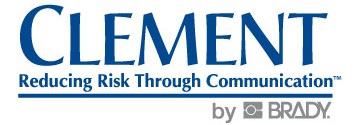Respiratory Protection Can Be a Lifesaver
Many workplace hazards are easy to spot if we know what we’re looking for. The same cannot be said for toxic atmospheres. Airborne contaminants pose unique hazards; they’re often invisible, as well as odorless. Employees may be inhaling dangerous substances and not even know it.
The key to safety in such environments is respiratory protection. By law, employers must provide respiratory protection to employees who work in hazardous environments — a rule that affects more than 5 million workers in 1.3 million workplaces. Respirators protect workers against a variety of airborne chemicals that can cause cancer, lung impairment, diseases or death.
Respirators: The Basics
Respirators are facepieces, masks, hoods, helmets or other similar devices that protect users from harmful environments that may have high levels of toxins, low levels of oxygen, or both. There are two basic types of respirators:
Air-purifying respirators use a filter, cartridge or canister to remove specific contaminants, including airborne particles, chemicals and gases, from the air. This group includes particulate respirators and gas masks.
Atmosphere-supplying respirators protect users by supplying clean respirable air from another source. Respirators in this category include airline respirators, which use compressed air from a remote source, and self-contained breathing apparatus, which contain their own air supply.
Choosing the correct respirator depends upon a multitude of factors that employers must weigh carefully in order to select the best protection. Key items to consider include:
- The type and amount of airborne contaminant
- The physical configurations of the job site
- The work being performed
- Specific worker characteristics
The Exposure Assessment
A critical component of the respirator selection process is the exposure assessment. If employees are exposed to respiratory hazards and/or are required to wear respirators, an exposure assessment must be performed.
An exposure assessment will determine the identity of a contaminant, as well as answer these important questions:
- How much of the contaminant is present in the air?
- Is it a particulate (dust, fume, mist, aerosol) or a gas/vapor
- Is it a chemical and are safety data sheets available?
- Is it biological in nature (bacteria, mold, spores, fungi, virus)?
- Are there mandatory or recommended occupational exposure levels for the contaminant?
The exposure assessment should enable an employer to choose the most effective respirator to mitigate the risk. Where questions remain regarding exposure levels, the atmosphere must be considered immediately dangerous to life or health.
Medical Evaluation
By their very nature, respirators can be physically taxing on users. Before an employee can wear a respirator on the job, he or she must be medically cleared to do so. A licensed health care professional will conduct a thorough evaluation of the employee to determine if he or she can safely wear a respirator.
Among the questions that will be asked:
- Does the employee smoke?
- Does he or she experience any shortness of breath when walking at a normal pace on level ground?
- Has the employee ever experienced anxiety when wearing a respirator?
- Is the employee taking blood pressure medication
Fit Testing
Some environments require a tight-fitting respirator. Tight-fitting respirators rely on a secure mask-to-face seal to block out hazardous substances and a fit test is required.
A fit test must be performed:
- Before an employee first uses a respirator
- At least every 12 months to ensure the respirator still fits
There are two types of fits tests:
The qualitative fit test relies on the user’s sense of taste or smell to detect leakage into the respirator’s facepiece. The employee is exposed to an irritant, and, depending on the reaction, receives either a “pass” or a “fail.”
The quantitative fit test is more sophisticated and relies on instruments to measure potential leakage. During this type of fit test, a probe is attached to the facepiece and then connected to the machine by a hose.
Workplace exposure levels determine which fit test procedure is required, although qualitative fit testing is normally used for half-mask respirators, which cover the mouth and nose, while quantitative fit testing can be used for any type of tight-fitting respirator.
Furthermore, there are approved methods used for both types of fits tests to ensure accuracy.
Depending on individual characteristics, an employee may need to try on several different respirators to find one that fits properly. Additionally, fit testing must be redone if a person experiences changes in his or her physical condition as a result of such things as:
- Weight gain or loss
- Major dental work
- Surgery on the face and/or scarring where the seal attaches
Some Final Thoughts
Respirators are complicated pieces of equipment and not every employee is capable or well suited to wear such a device. However, in toxic environments, the value of respirators cannot be overstated. Respirators are truly lifesavers.

